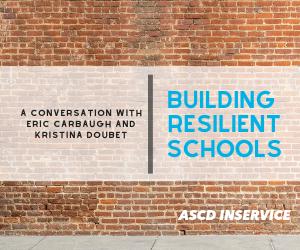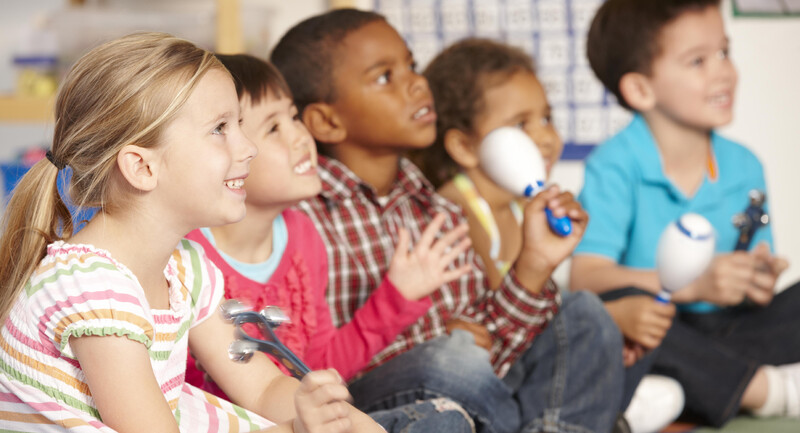Loss is an inevitable part of life, something we should all be prepared to experience. With the stress of the COVID-19 pandemic and the urgency to meet the needs of our students, coping effectively with loss has never been more important.
In college, I took classes to prepare me for working with students. We planned lessons, theorized discipline, and read educational philosophies to mold ourselves into the educators we hoped to become one day.
Dealing with the loss of a student to death was not on that list. This is not to say that education programs are at fault for not carefully preparing teacher candidates for loss. It is an experience that no one can ever really prepare for, but one that many will face at some point in their careers.
I have lost seven students in my fourteen years as a teacher. I offered the support I could to their classmates and attended memorial services, but, through it all, I forgot the importance of dealing with my own loss.
Strong relationships lead us to be effective educators and these relationships allow us to help students achieve success.
Creating strong relationships means opening ourselves up to care about our students. Students aren’t just names on a roster or numbers on a computer; they are individuals we know, care about, and talk to. We listen to their stories, cheer them on, redirect their behaviors, and support their endeavors. I have laughed with my students, cried with my students, and endured huge societal changes with my students. I ask them to share life connections over literature, and I hear about their future hopes and dreams and often trade my own stories.
One of my students, Makiya, was just 17 when she was shot as an innocent bystander at a party. Makiya loved to laugh. She was creative and interesting and full of life. Every time we read a story in class, she would find a personal connection and share it with us. In 2016, when the popular Mannequin Challenge hit social media, she asked me if we could do it as a class. We met after school to design a way to connect this activity to the story we were currently reading. Students had to analyze characters, setting, theme, and then write about it. The idea brought ownership, creativity, and life to the classroom. Makiya did that.
As an educator, I learned from activities like this that stories are what connect class as a group, and these stories are what bind us as a family. This requires vulnerability on the teacher’s part. I wouldn’t trade that vulnerability for anything, but it makes the death of a student all that more difficult to endure. How can we go through all of those life experiences together and not feel loss or grief when something happens to one of us?
Over the past few years, I realized that it will never become easier to cope with the death of a beautiful, young life—but that doesn’t mean I should stop connecting and creating relationships.
Normalizing Grief and Support
It does, however, mean that I need to take the appropriate time to identify my loss and grief. A few years ago, I lost a student named Josh who was in my senior English class. Josh was funny, kind, athletic, and easy to be around. He was the kind of student that made the classroom brighter and more inclusive. The day after Josh died in a car accident, I heard the news on my way to school in the morning.
I wanted to be supportive of my students and attend class so that I could help guide them through this tragic event. (I had also lost my close friend during my senior year of high school so I could relate to the loss of a peer and friend at a young age.) For some students, this may have been the first time they experienced the death of a peer and whether they were close to Josh, they were bound by very strong emotions. Grief counselors talked to my class and we decided to write cards to his family.
That day we took the time to tell stories, we remembered him, and we reflected on all of his qualities that we would miss deeply. Some students cried, some hugged, and we allowed each other to talk, listen, or sit in silence throughout the class. We talked about what to do about the seat he sat in. I felt like it was very important for us to decide together if we should change seats, keep his seat empty, or even rearrange the classroom desks.
When I went home that night, I really struggled with his death. I couldn’t help but to see him reflected in my own son who was only seven at the time. Josh was so much of what I imagined my son to be when he got older. I was nervous about going back to school and seeing Josh’s empty desk. All I wanted to do was to isolate. I didn’t want my two young children to see me upset. I didn’t want my husband, who is also a teacher and who coached Josh on the football field, to feel burdened by my grief when he had his own.
I also felt I didn’t have the right to grieve because he wasn’t my family or peer. But with the support of my sweet husband, I realized that while being strong for students is important, it is also important to share the real-life grief we have with our support systems. That weekend, my family and I went hiking and had a picnic. We played board games at night and watched movies curled up on the couch. If I felt sad, my husband and I would talk and sometimes I cried.
The pain we feel when a student dies is valid and real. We don’t need to ignore it or push through it. It also means that “loss” does not have to mean “lost.” Those students may be gone from our lives, but they can remind us of the impact of the student-teacher relationship. Although the students I’ve taught who have died are not with us, they are not lost to me. I will remember them every year, and I will honor them in my determination to pursue healthy, positive, and meaningful relationships with the people in my classroom. In a tragic time, where it might be easier to find despair, we can make the effort to normalize grief and support rather than ignore it. This couldn’t be more important to remember this year as our students and country all begin to emerge from the crucible that is COVID-19. We have to remember that we must identify our own trauma or grief before we can ever truly help another.
If you or a colleague are dealing with grief from the loss of a student, please know you are not alone. People cope with grief in many different ways. Sometimes, you may just need to take care of yourself by talking to someone about how you are feeling or by spending time outdoors. Maintaining physical and mental health may allow you to deal more productively with your grief. Journaling, engaging in a hobby, or spending time with your family can also offer you solace. While there are no “right” ways to deal with grief, there are wrong ways. Your grief should not lead you down a self-destructive path. If your grief or mental health ever become too difficult to handle without professional help, there are those who can help.
The National Alliance on Mental Illness (NAMI) offers 24-hour support to aid anyone dealing with a crisis. Call 800-950-NAMI or text “NAMI” to 741741. Grief Share will also locate support groups for you to attend where you live. Connecting with people, and not withdrawing, will allow you to continue to make deep, meaningful relationships as an educator.
*A version of this post first appeared on South Carolina ASCD’s blog.








